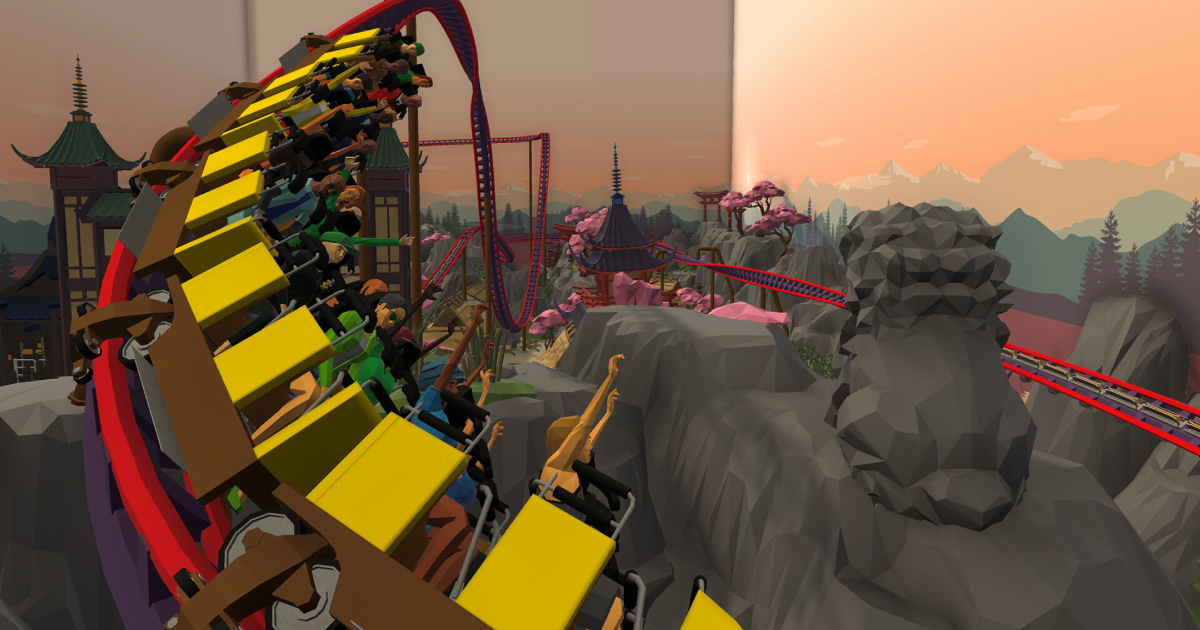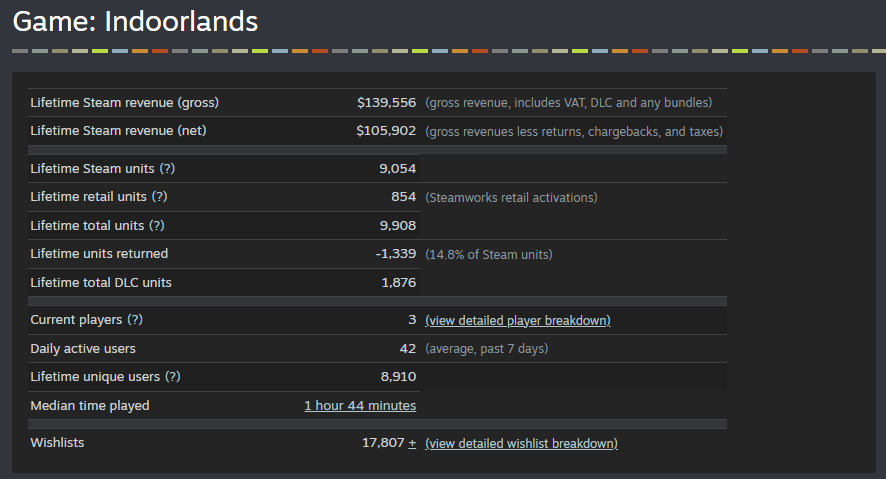Why indie theme park sim Indoorlands failed to recoup dev costs in today's market despite targeting right genre
In a world where more than 1,000 games are released every month, even quality titles run the risk of not recouping their development costs. Here are the lessons indie studio Pixelsplit learned from the launch of its theme park sim Indoorlands.

In October, Pixelsplit co-founder Bennet Jeutter shared a postmortem analysis of Indoorlands to celebrate the anniversary of its version 1.0 release. His thread was also spotted and covered by Simon Carless in the latest GameDiscoverCo newsletter.
Before we share some interesting takeaways, a few words about the game itself. Indoorlands is a park management simulation title, which is a pretty popular niche on Steam. The main twist here is that you should build your amusement park indoors, while being able to freely design halls and create rollercoasters from scratch. Originally launched in Early Access in 2021 (version 1.0 came out on October 14, 2022), Indoorlands currently has an 82% rating on Steam based on 165 user reviews.
Here are the main milestones of Indoorlands development and its results:
- Development on Indoorlands started in 2020 with €45k of funding from the German government, and total production costs amounted to €200k (excluding “founder self exploitation”);
- Pixelsplit launched the EA version with 3,000 wishlists, receiving good reviews and reaching 1,000 copies sold in the first week;
- At full launch, Indoorlands had 13k wishlists, but first-week sales were also modest — 1,250 units;
- As Jeutter noted, “there was a severe (Unity) bug that caused freezes and earned us a ‘mostly negative’ rating in the beginning”;
- Post-launch, the studio didn’t see any sales spikes until “an unexpected ‘Let’s Game It Out’ YouTube video on New Year’s Eve” (5.4 million views!) — it resulted in 1,600 units sold in one week;
Our first major sale ❄️ didn’t shake the earth. But an unexpected “Let’s Game It Out” YT video (google it, such a funny video) on New Year’s Eve did (for us) – 1.6k units sold in one week, surpassing our launch week! 🎇 pic.twitter.com/BmbZuyFtJJ
— Bennet Jeutter (@BennetJeutter) October 16, 2023
- Indoorlands has sold just over 9,000 copies lifetime with net revenue of roughly €100k, meaning it failed to recoup its production budget;
- “With a recent avg of 1.5k€ net / mo just 66 more months till ROI”;
- Good news: the Supporter DLC for the game made $12k in net revenue — “it had a good ROI because the content was already there and the in-game features were easy to implement.”

Image credit: Bennet Jeutter
Jeutter said the team has learned several lessons from launching Indoorlands, from the importance of influencers (see the Let’s Game It Out video) to having a good hook for the game (“indoor theme park isn’t”).
The latter is something Carless also pointed at, saying that even with the right genres, it is important to have a great “supplemental hook” like, for example, a “theme park starring dinosaurs.”
He also noted that reaching nearly 10k copies sold for a new IP is a good result, because “only ~60 of the 1,000 games debuting on Steam in Nov. 2023 have sold 10,000 units so far.”
There is also a broader issue that applies to today’s overcrowded games market in general. One of the reasons why it is getting harder and harder for new indie games to make it to the top (even in those “right” genres beloved by Steam players) is that they have to compete with older, much more successful titles. So instead of purchasing another builder or simulator from an unknown studio, they may rather “buy a great, ‘older’ game in the same subgenre for 70-80% off.”
Here is what Carless concluded: “We believe that’s the source of some — though obviously not all — of the recent market disruption. It doesn’t mean less $ is being spent on games. But it makes it way tougher to enter the market with new IP, unless you can get YouTubers playing your game regularly for major reach boost.”